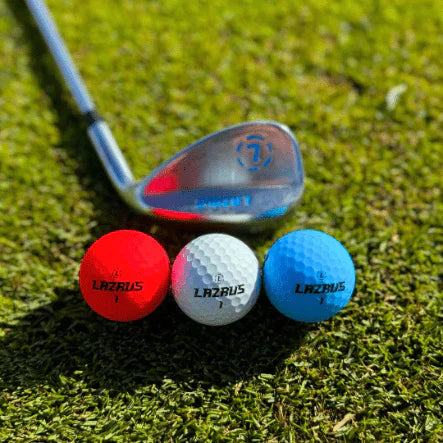Close
Products Loved by Our Customers

Golf is a game of precision, strategy, and adaptability, and every element of your equipment can impact your performance. One of the most important yet often overlooked choices you’ll make is the type of golf ball you use. Among the many options available, the debate between soft and hard golf balls stands out. What’s the difference between these two types, and how do you know which is right for your game? In this guide, we’ll break down the construction, benefits, and key differences between soft and hard golf balls to help you make an informed decision and elevate your performance on the course.
To fully grasp the differences between soft and hard golf balls, it’s crucial to first understand how golf balls are constructed. A modern golf ball typically consists of three main components: the core, mantle layers, and the cover. Each part plays a specific role in determining the ball's feel, spin, distance, and overall performance.
Core: The core is the powerhouse of the golf ball, responsible for energy transfer during impact. It can be made from rubber or synthetic materials and varies in size and density depending on whether the ball is designed for distance or control. A softer core compresses more on impact, creating a soft feel, while a firmer core maximizes distance.
Mantle Layers: These are additional layers between the core and the cover that enhance specific performance attributes. Multi-layered balls often feature mantles designed to optimize spin and control without sacrificing distance.
Cover: The outer layer of the ball, usually made of urethane or surlyn, affects the ball’s durability, spin rate, and overall feel. Urethane covers tend to be softer and are commonly found on premium golf balls, while surlyn covers are firmer and more durable, often used in balls designed for distance.

By understanding the anatomy of a golf ball, you’ll better appreciate how its design impacts your performance, particularly when comparing soft and hard golf balls.
Soft golf balls are designed to provide a low-compression feel, which means they compress more easily upon impact with the clubface. This softer compression makes them ideal for players who prioritize feel and control, especially in their short game.
Soft golf balls offer several distinct advantages that cater to specific types of golfers:
Enhanced Feel: One of the most noticeable benefits of soft golf balls is their smooth, responsive feel. This characteristic is particularly appreciated during putting and chipping, where precision and touch are critical.
Better Spin Control: Soft golf balls excel in spin control, especially for wedge shots and around the greens. This increased spin allows players to execute more precise shots, whether it’s stopping the ball quickly on the green or creating backspin.
Improved Playability: For beginners, high-handicap players, or those with slower swing speeds, soft golf balls can offer more forgiveness and consistency, making the game more enjoyable.
Soft golf balls are often constructed with a urethane cover, which contributes to their ability to generate spin and maintain a soft feel. Players who prioritize finesse and control over sheer distance will likely find soft golf balls to be a valuable addition to their game.
On the other end of the spectrum are hard golf balls, which are designed for players who prioritize distance and durability. Hard golf balls have a high-compression core, making them less likely to compress upon impact. This design caters to golfers with faster swing speeds, allowing them to maximize energy transfer and achieve greater distances.
Hard golf balls also come with their own set of advantages that make them appealing to certain types of golfers:
While hard golf balls may lack the soft, responsive feel of their counterparts, they are ideal for players who prioritize power, distance, and durability in their game.
When comparing soft and hard golf balls, it’s helpful to break down their differences across key performance metrics:
|
Feature |
Soft Golf Balls |
Hard Golf Balls |
|
Compression |
Low |
High |
|
Feel |
Soft, responsive |
Firm, solid |
|
Distance |
Moderate, better for slower swings |
Maximum, ideal for fast swings |
|
Spin Control |
High, excellent for short game |
Low, minimizes side spin |
|
Durability |
Moderate |
High |
These differences highlight how soft and hard golf balls cater to distinct playing styles. Soft golf balls shine in feel and precision, while hard golf balls excel in distance and toughness.
Selecting the right golf ball involves considering your unique playing style, swing speed, and priorities on the course. Here are some factors to help you make the best choice:
Choosing between soft and hard golf balls is a personal decision that depends on your playing style, preferences, and goals. Both types of golf balls have their strengths, and understanding these differences will help you make an informed choice.
At LAZRUS Golf, we offer a range of premium golf equipment, including 3 Piece Golf Balls, used golf club iron sets, and more. Explore our golf club store to find the perfect gear for your game. Whether you’re looking to improve your short game or maximize your distance, we’ve got you covered.